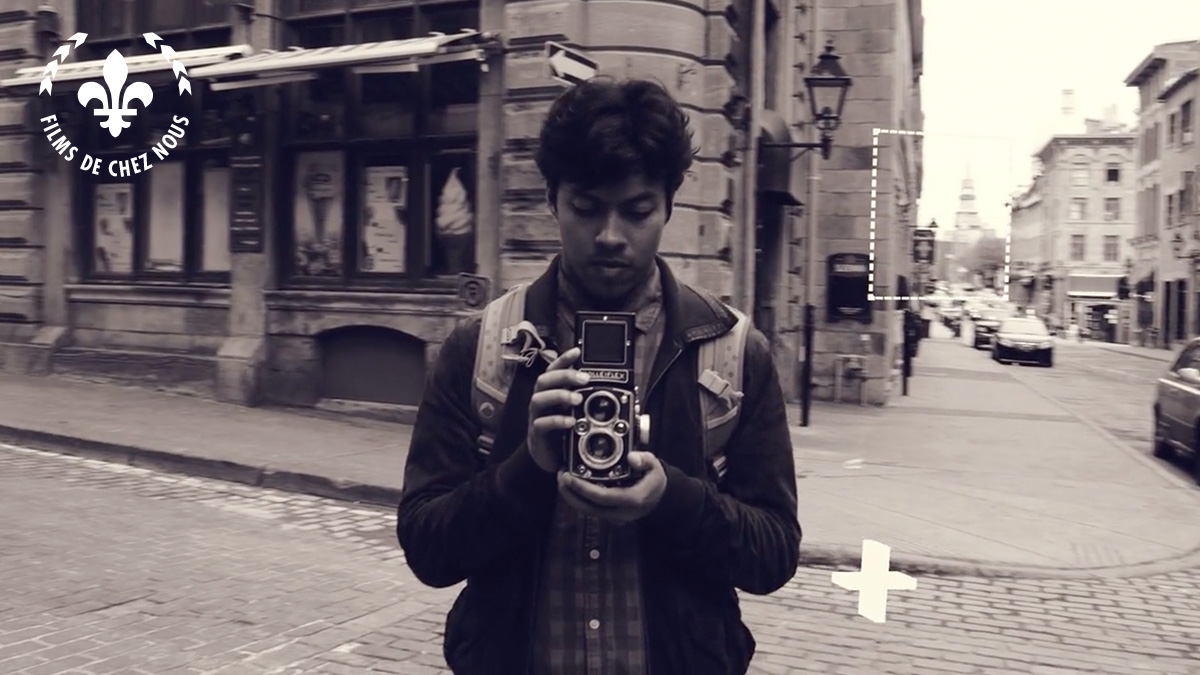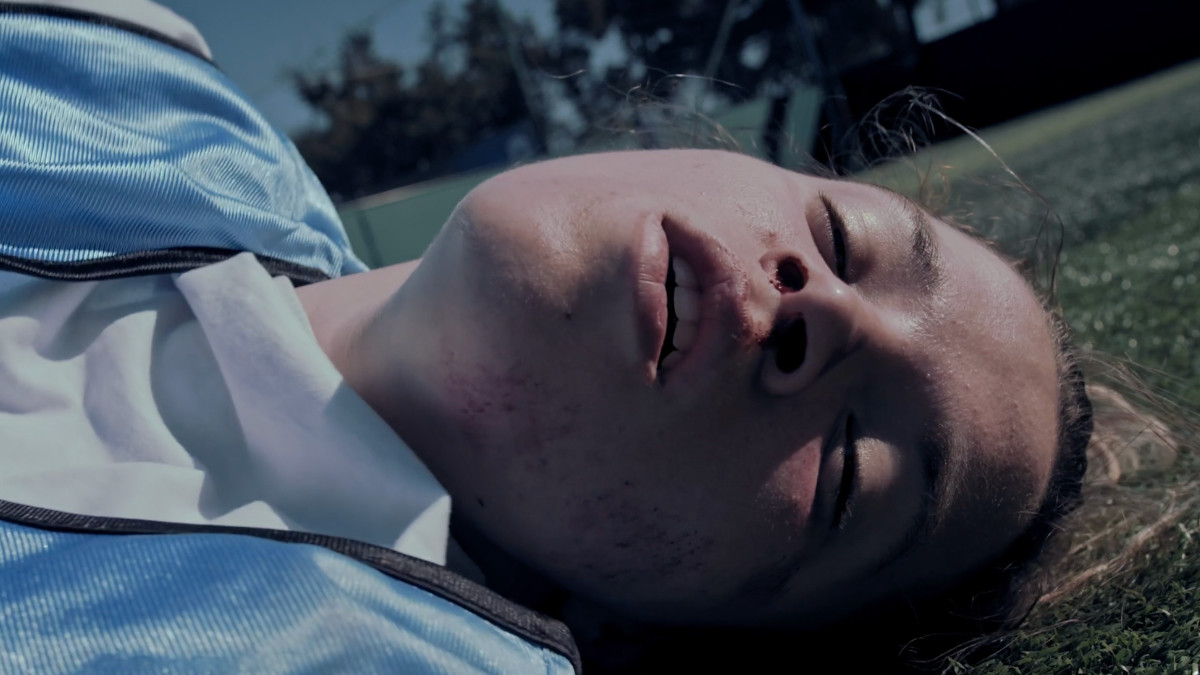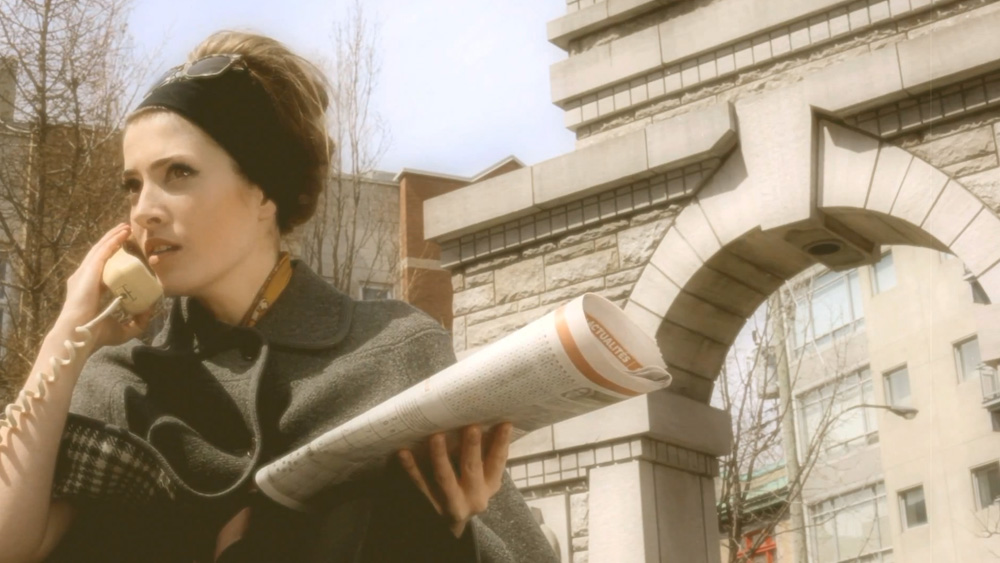Two estranged sisters struggle to rekindle their severed yet unexpectedly powerful bond on the day an apocalypse will end the world.
“Bleed, Don’t Die” is a poignant and timely dystopian feminist short film that delves into themes of sisterhood, resilience, and the end of the world. As two estranged sisters navigate the tumultuous landscape of an impending apocalypse, they are forced to confront their past grievances and rediscover the strength of their bond amidst the chaos.
In this gripping narrative directed by Vitória Vasconcellos, whose previous work includes the thrilling film “Pathei Mathos,” viewers are invited to witness the profound journey of reconciliation and redemption as the sisters grapple with their shared history and the looming threat of annihilation. Through its powerful storytelling and evocative imagery, “Bleed, Don’t Die” offers a compelling exploration of the enduring power of sisterhood in the face of adversity.
“Bleed, Don’t Die” explores the bond between two estranged sisters amidst an impending apocalypse. What inspired you to delve into this theme of familial connection in the face of adversity, and how does it resonate with your personal experiences or observations?
I come from a country built on the back of single mothers and matriarchal households. In the face of adversity I have lived through the apocalyptical power of female support – and witnessed how that bond can heal wounds and restore hope. This movie is my way to honor these women who haven’t shied away from the voracity of life and have faced situations that seem impossible to overcome, in particular my mother, grandmothers, my aunts and sisters and the friends who became sisters. The people that even while bleeding, refused to die for the sake of those around them.
The film draws from the medieval poem “Perceval, the Story of the Grail” and adds a women-centric spin to it. Can you discuss the process of adapting this source material and infusing it with themes of female resilience and communal healing?
Adapting the poem wasn’t the initial idea, actually. It was after writing the script that our editor John Stephens pointed me to the medieval texts and noted the themes that both works shared. In studying Percival and the mythology around the poem I found an immensely compelling story about life, death and healing that directly dialogued with what I was trying to say in Bleed, Don’t Die. So I began a process of exploration, ressignification and transformation between the two works and saw my initial idea being enriched and potentialized by bringing elements of Percival into it. It was a very organic process that took me to the foundations of hero-centric storytelling and helped me understand why a poem written such a long time ago can still speak to life today.
You mentioned that being a woman is a communal experience of overcoming pain. How does the film explore the shared experiences of womanhood, and what message do you hope to convey about the strength found in collective resilience?
I think the movie explores how sometimes all we can do to heal the world is to heal the relationships we have with those we love. By focusing on two sisters who, although estranged, share a bond so powerful they can provoke an apocalypse Bleed, Don’t Die invites audiences to consider that perhaps the strongest power we have as people is our ability to connect. In particular, we have two characters going through the process of understanding that their womanhood is (and was) entirely connected by the sisterly bond they shared. Throughout the narrative they discover the growing sense that the troubles that have haunted them can be resigned when they face them together, they discover that being a woman is oftentimes a communal experience indeed.
“Bleed, Don’t Die” has been screened at prominent film festivals such as Fantaspoa and Cannes Short Film Corner. How has the film been received by audiences, and what reactions or feedback have stood out to you?
Taking a movie to festivals always gives you this incredible chance to talk to people, see how they were (or weren’t) affected by your work and have honest exchanges oftentimes over a glass of wine in a more chill setting. At NOT Film Festival in Italy, I had the time of my life connecting with artists who have written, produced and directed work focused on womanhood and hearing their thoughts on Bleed, Don’t Die. It was illuminating to hear their response to the film and the conversation that sparked from it inspired me in more ways than one.
However, my favorite “feedback” moment was when we showed the finished film to some of our mentors, who have seen each and every film I’ve directed. This was a difficult project to pull off, we had an incredibly passionate team so It’s encouraging and heartwarming to hear from people you respect that the work you’ve put in is paying off and your progress as an artist is shining a bit strongly through every work.
Your debut short film “Pathei Mathos” also received acclaim and was featured on Film Shortage. How did your experience with “Pathei Mathos” inform your approach to directing “Bleed, Don’t Die,” and what growth or evolution do you see in your filmmaking style between the two projects?
Making Pathei Mathos taught me to not fear my instincts. Although there has been significant growth from all of us since then (many people that worked on Pathei Mathos also worked on Bleed, Don’t Die), that is a lesson I refuse to forget. Since making that first short I have been dissecting the idea of “genre film” and understanding the place of human connection in those types of narrative. I think Bleed, Don’t Die is a culmination of that.
With every project, I am left with a desire to explore a new facet of filmmaking: In 2023, after Bleed, Don’t Die, I directed documentaries and worked with simpler visual structures that feel very different from the ambitious storytelling of Bleed, Don’t Die. My true interest is exploring the portrayal of authentic human connection across these different genres and languages, particularly in stories about women. This is what moves me to discover my “style” and keeps me wanting to create. At the end of the day, I carry lessons from these eclectic explorations every time I work on a new project, nothing is ever wasted.
The title “Bleed, Don’t Die” suggests resilience and survival. Can you elaborate on the significance of this title and how it encapsulates the central themes of the film?
In the animal kingdom, there is only one animal that constantly bleeds, but doesn’t die. I find this fact a beautiful and poetic symbol of female resistance. It was impossible for this short film to have any other name. In Bleed, Don’t Die we attempt to talk about the resilience that connects us, and the healing that comes from that connection – which oftentimes is impossible to explain and feels surreal.
Our decision to use elements of genre filmmaking came directly from the real-life surreal feelings that arise from the power of female connection. The multilayered connection women have to blood is also something we considered when shooting this movie and deciding on its title.
The impending apocalypse serves as a backdrop for the sisters’ journey of reconciliation. How did you balance the larger, apocalyptic elements with the intimate, character-driven story of the sisters’ relationship?
This was a huge challenge. We tried to always keep the focus on the two characters and use all the other elements to serve their inner journeys and connect the audiences to this dystopian new world. We tried to frame this as a story about two people that happen to be in a pre-apocalyptic world, and not the other way around. The focus was always to build from inside out and allow the external to reflect the internal journey. The world-building element was a constant exercise of trial and error where we failed over and over until we reached what we believed to be a proper balance. Our willingness to never lose sight of the simple fact that this was a story about two sisters rekindling a severed relationship helped put things into perspective when doubt would cloud our judgment.
What’s next in the books for you Vitória, what are you currently working on?
I’m currently finalizing a short film we shot in São Paulo, Brazil, called Esconde-Esconde (Hide and Seek) and acting in my first feature film, Evan Siegal’s A Wish For Death in the Wake of Eternal Light.
You’ve told us about some of your favorite short films in your past interview, have you seen anything exciting since?
Yes! I have seen tons of exciting work that inspire me to tell daring, sensitive and personal stories. The Beads (Emanuel Lavor and Rafaela Camelo), Ice Merchants (João Gonzalez), Thursday (Bren Cukier), Paradise Europe (Paulo Menezes and Leandro Goddinho) , The Headhunter’s Daughter (Don Josephus Raphael Eblahan) and Patision Avenue (Thanasis Neofotistos) are some titles that come to mind now.




